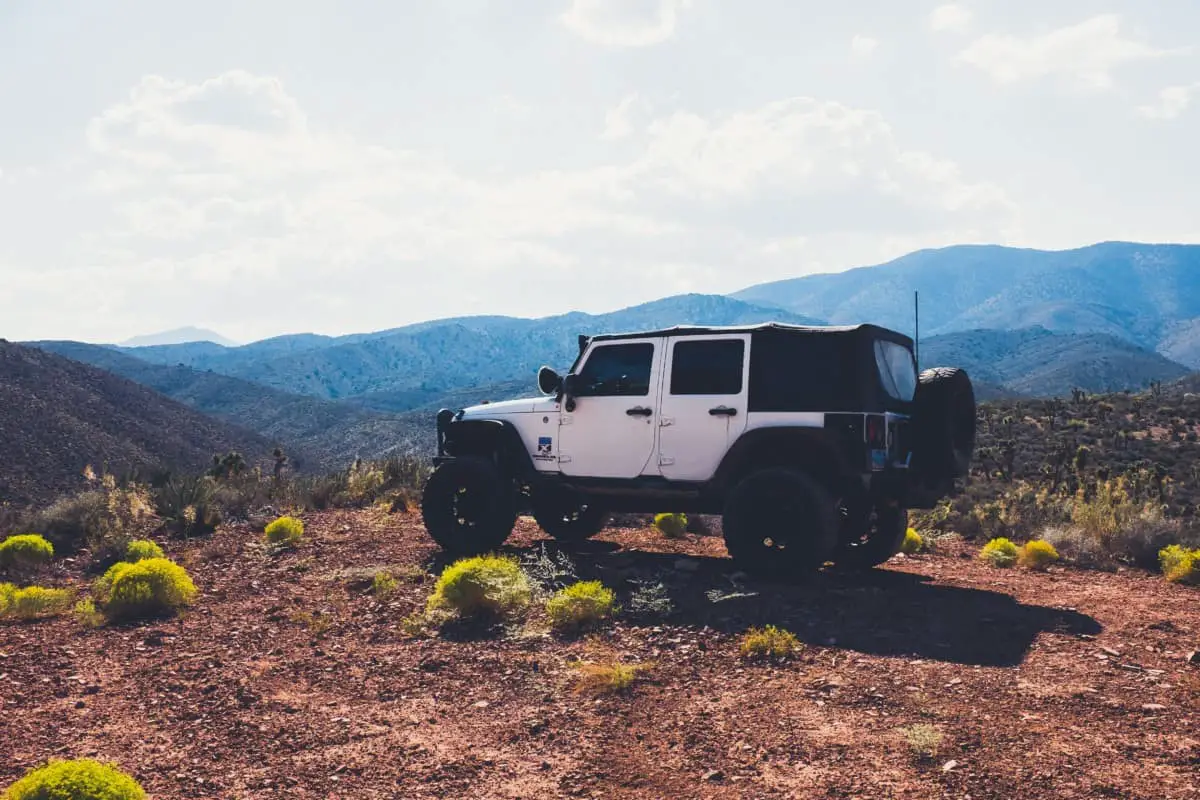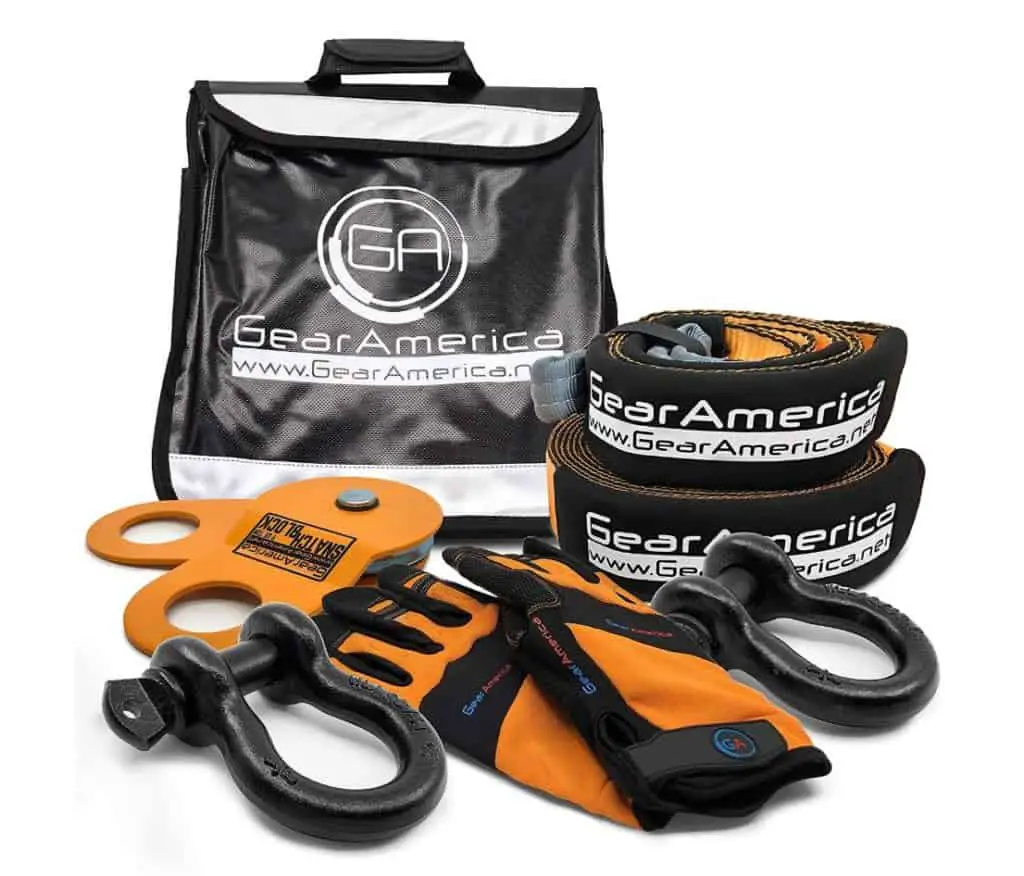Whether you are a veteran Jeeper with miles of earth trekked or a brand new from the lot Jeeper with no time off the pavement, there are a few things I believe every Jeep owner should have or carry in their rig at all times. Check out my top 10 essentials if you need ideas of what to get for your Jeep!
1. Recovery Gear & Tow Points
It doesn’t matter if you never leave the asphalt, having some kind of recovery gear can never be a bad idea. Whether your friend needs a quick tow or you get stuck out on the trail, plenty of people are willing to help you especially when you have the equipment to get helped. It just makes the job easier.
Recovery gear can range anywhere from a simple tow strap, chain, or rope to a bumper pointed winch designed to pull the weight of a car. Whatever your choice, just carry something with you at all times. You never know when you’ll have a chance to bust it out.
My personal preference for recovery gear to carry is a 30′ nylon tow strap. With this length, I have plenty of room to stretch wherever I need and the high tow capacity provides peace of mind that my gear won’t fail. Choosing to carry a synthetic rope or similar material is something I highly recommend.
If you have an incident where a chain or cable snaps, there is a much higher chance of it snapping back and hurting someone. With a synthetic cable or tow line, if it snaps, it won’t pop back like a metal cable and seriously injure anyone.
The second part of recovery gear is to have proper tow points on your rig. While you can likely find somewhere to attach in an emergency, it makes life a lot easier when you have accessible D-rings on the front and rear of your Jeep to easily hook up to.
When you are installing or looking for D-ring or tow points to add to your Jeep, this isn’t the place to be cheap. It’s worth the extra time and cost to find quality parts and hardware. The last thing you want is to hook up to a cheap D-ring and begin pulling only to have it snap off and seriously injure yourself, someone else, or damage your Jeep.
No matter what you choose to keep in or on your rig, it will always be better to have something than nothing. In fact, many off road events won’t let you attend if you don’t have proper tow points or ways of recovery.
2. CB or HAM Radio
With the ability to go to places far from civilization and off the beaten path, the Jeep owner has several safety things to always keep in mind. One such thing is a reliable and constant form of communication.
Similar to recovery gear and tow points, many Jeep events require at a minimum that every Jeep on the trail have a CB radio. In case you don’t what these are, CB (Citizen’s Band) radio is a short distance radio communications kind of like heavy duty walkie talkies. Truckers have used CB for decades to communicate with each other about traffic conditions etc.
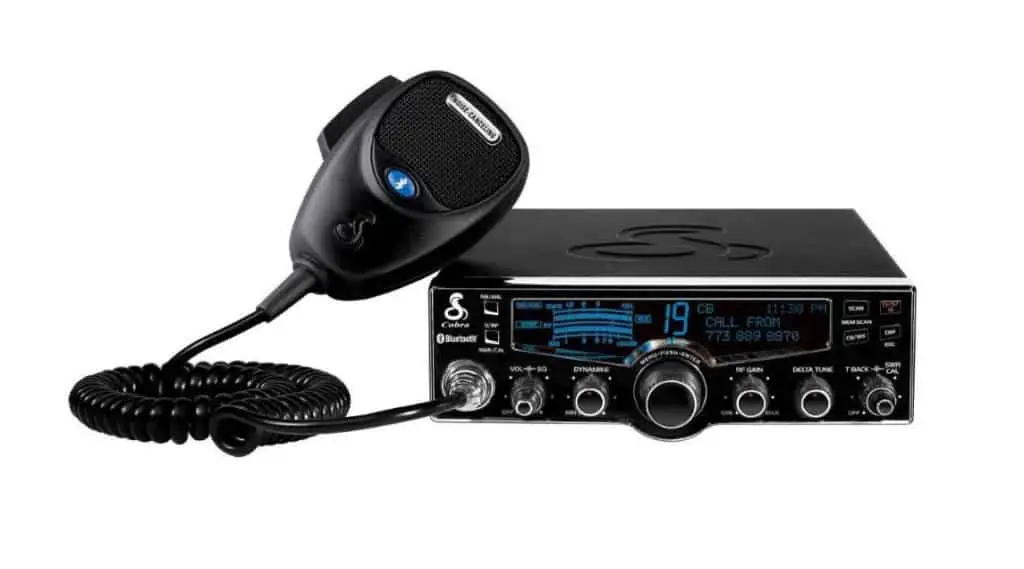
When you are out on the trails, your cell phone isn’t going to cut it with spotty service and poor battery life. With radio communication, you can stay in contact with numerous people, your power is drawn from your car, and you aren’t relying on cell phone towers in the middle of nowhere.
An alternative that many serious Jeepers have turned to in place of CB radio, is HAM radio. Committing to HAM radio is a serious upgrade for several reasons.
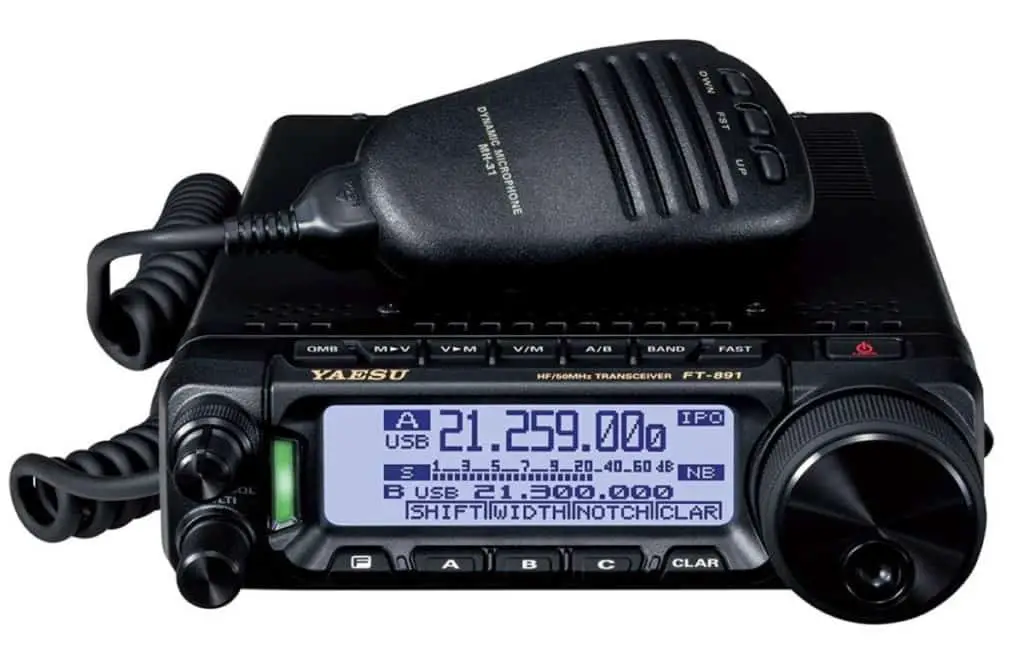
In order to legally operate a HAM radio, you have to have a license due to the extensive frequencies, power levels, and so forth that HAM radio can handle. By using HAM over CB, you are expanding your range by a very large amount and can reach a much larger “audience.”
Although HAM seems like a better choice, you need to weigh the pros and cons of both CB and HAM. Like mentioned above, CB requires no license but is also very limited. HAM has much better capabilities but you might not have trail riding members with the same setup.
You might be better off investing in the rights and equipment to run both setups if you can, but like the recovery gear, just have something!
3. Aftermarket Lighting
There’s no doubt that you’ve seen a lifted Jeep strolling through town and it seems mounted everywhere are massive light bars just packed with LEDs and you ask yourself, “Who needs all that light?”
For someone who never goes off roading, light bars and aftermarket lighting might seem like a waste of time. However, those massive light bars and bright LEDs do serve a purpose.
Let me clarify that light bars are ILLEGAL to operate on the road and are strictly OFF ROAD USE ONLY!
When off road though, having lots of extra light can help you successfully navigate your trail by illuminating all your surroundings. When you are out in the middle of nowhere, you aren’t guaranteed to make it to a camp spot before the sun goes down. It would be a hard trip if you had to navigate the unknown wilderness with only stock Jeep headlights.
This doesn’t mean that you have to be the guy with 50″ light bars on all four sides of your Jeep. It is a smart idea though to invest in something to give your headlights some boost.
There are many options for light upgrades on your Jeep. You can always get aftermarket headlights and some smaller spot lights to point off to the sides and illuminate your blind spots. Pair that with one light bar on your hood or across the top of your windshield and you should have plenty of ability to see your surroundings.
How much you choose to expand on this essential is up to you and where/when you find yourself on the trails. Just remember that even in lighting safety should be considered and adherence to DOT laws is a must.
4. Hi-Lift Jack
Many might argue this point, but after you try to work on your Jeep on the trails or use a factory jack on the rocks while flexing your suspension, you’ll find a hi-lift jack as a major nicety if not an essential.
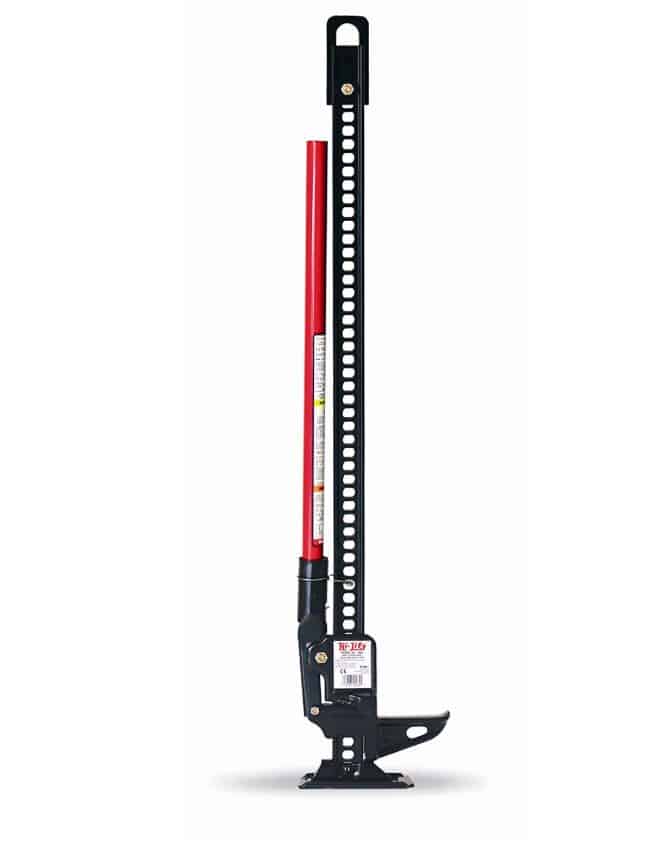
Despite it’s name, the hi-lift jack is not just a jack for your car. These tools can be used to lift, pull, push, winch, clamp and so forth. With many mounting options around your Jeep, there is no reason to be caught without one, especially if you like to explore the world solo.
Hi-Lift Jacks can be as simple or complex as you want them. There are many different accessories or designs to fit what you are looking for and can be customized to meet the demands of wherever you might off road.
Considering the ever escalating costs of owning a Jeep as a hobby, investing in a quality hi-lift is a simple and affordable way to keep yourself wheeling and not stranding in the middle of creation.
5. Body Armor/Protection
Next on my list of essentials is body armor or some form of protection to keep your Jeep as in good condition as possible. There are several different ways to provide your vehicle with some armor but I’ll outline a few below.
One way to add some protection is to get rid of your factory side steps and replace them some tubular rock guards or something similar made out of a quality metal. By doing this you can help ensure that when on the rocks, your guards will take the abuse instead of your door or paint.
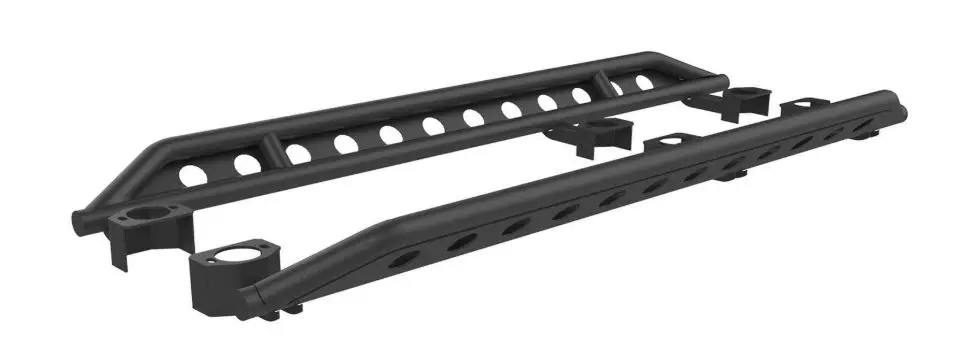
Next up, you can always buy magnetic body armor panels. If you’re like me, you want your car to stay in good condition, even the paint. Magnetic armor is an easy way to avoid scratches from rocks and brush while on the trail and just pop them off when you get home.

Many fabrication companies that sell aftermarket jeep parts also sell fenders, fender flares, and rear corners. All of these can offer different levels of protection for your Jeep.
While stock fenders and fender flares offer “some” armor, I think we can agree they don’t give much. By replacing your flares or fenders entirely with an aftermarket high grade aluminum or steel parts, you can help ensure you are well on your way to remaining dent free.
Lastly, in the way of protection, I suggest upgrading or adding skid plates to the underside of your rig. Most Jeeps come with a decent skid plate but in the aftermarket world you can always add or upgrade.
There are several other ways to help “bulletproof” your Jeep but these are just a few things to start with.
6. Extra Gas
Gas mileage and Jeeps don’t go hand in hand. Especially when you’re talking about the Wrangler. It’s like a driving a brick down the road and expecting have to have great aerodynamics.
The Jeep Wrangler also is not known to have the largest gas tank out there (aftermarket options excluded). So thats why I added extra gas to my list of essentials for every Jeep owner.
Now please keep in mind, I am not suggesting that you just drive around with spare gas tanks sitting in the back of your Jeep just sloshing around, spilling vapors into your car.
What I do recommend is looking into gas storage tanks you can attach to the back bumper or buy brackets for.
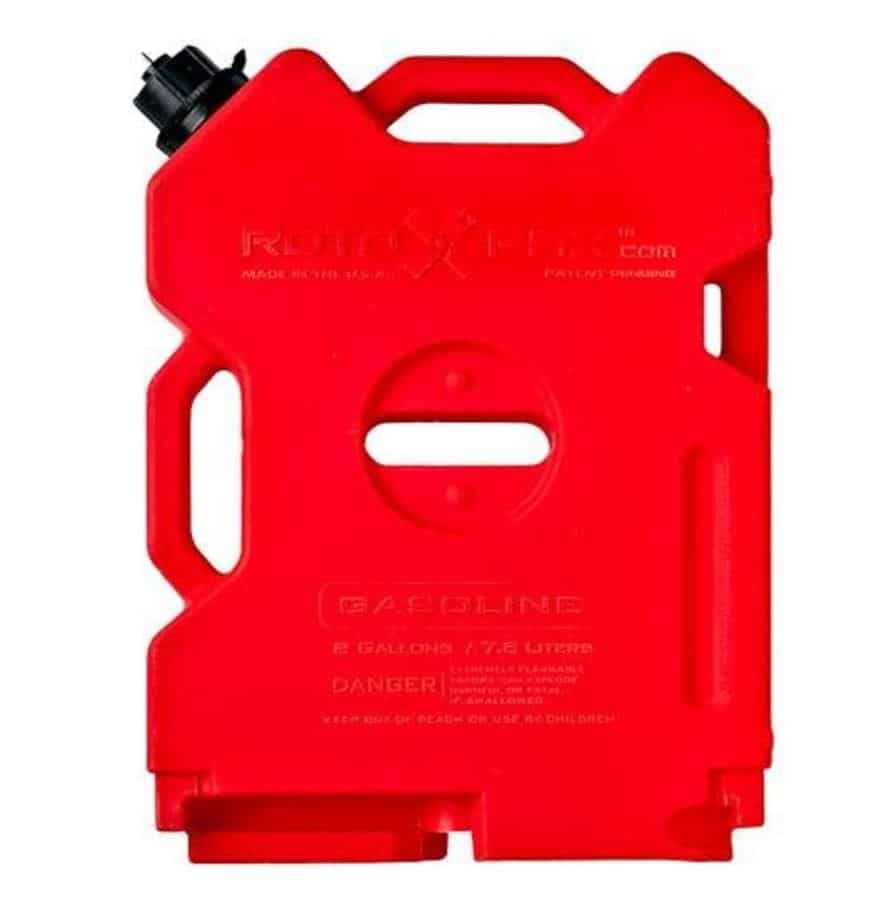
This way, when you have a long stretch of trail or non-civilized highway in front of you, go ahead and fill up an extra tank or two and never worry about getting stranded and hoping some kind soul will drive by extra gas.
Just like everything else, safety should always be considered. Only use containers designed to hold gasoline and have the proper ventilation. Otherwise you’re just asking for trouble. It might also be a great idea to find some containers that lock and lock to your Jeep. Otherwise, you have an open visitation for someone to fill up at the back of your rig.
7. Jumper Cables
This next essential is not strictly for Jeep owners but for every vehicle owner out there. This is something I will never be caught without.
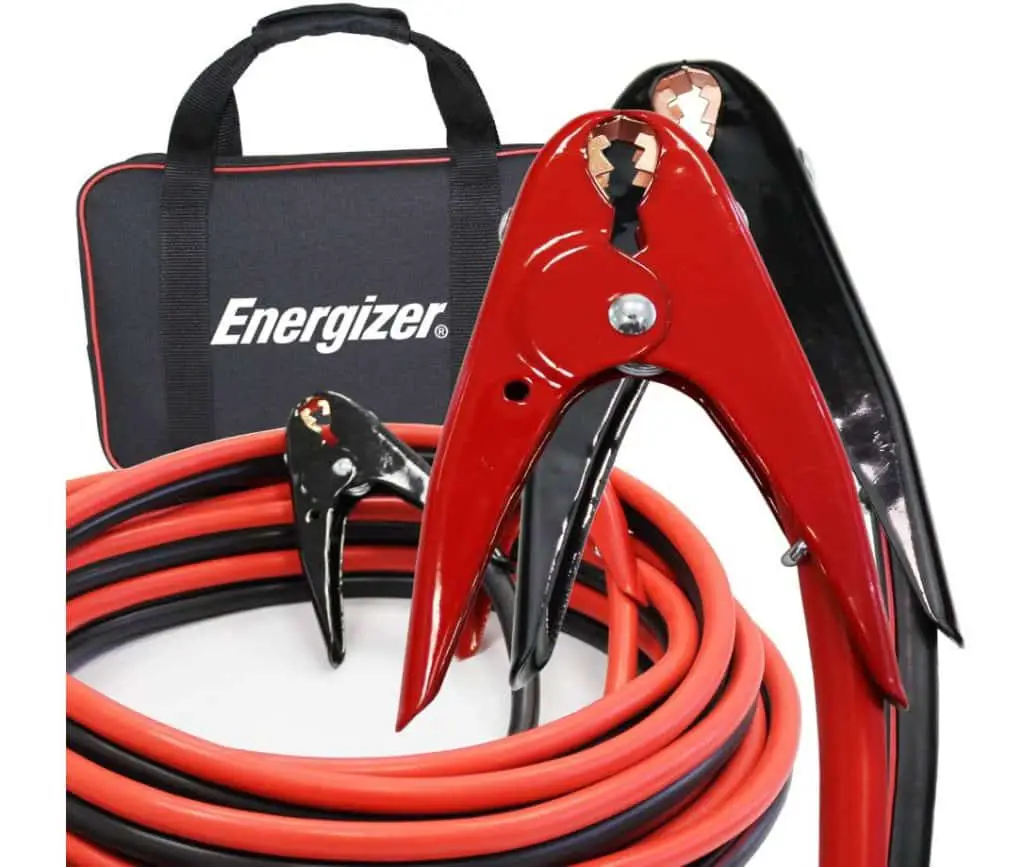
If you don’t have set right now, get in your car/Jeep/truck or whatever and go get a set of jumper cables or order some online. They are 100% worth the cost and nowadays can be stored in your car without ever noticing.
I remember my Dad carrying around big bulky cables growing up in the trunk of his car. However, cables today fit in a nice pouch you can store anywhere.
You’ll be surprised at the amount of times having cables will come in handy. Whether you need a jump, your friend needs a jump, or some stranger you see on the side of the road needs a jump, you can save the day.
Now if you really want, I would even venture to say to invest in a decent travel compressor/battery charger system. These can take many forms but decent ones often come with a battery jumper, air compressor for your tires, built in lights, and many more cool features. They cost a little more but can be worth it if you don’t want to rely on someone else giving you a jump.
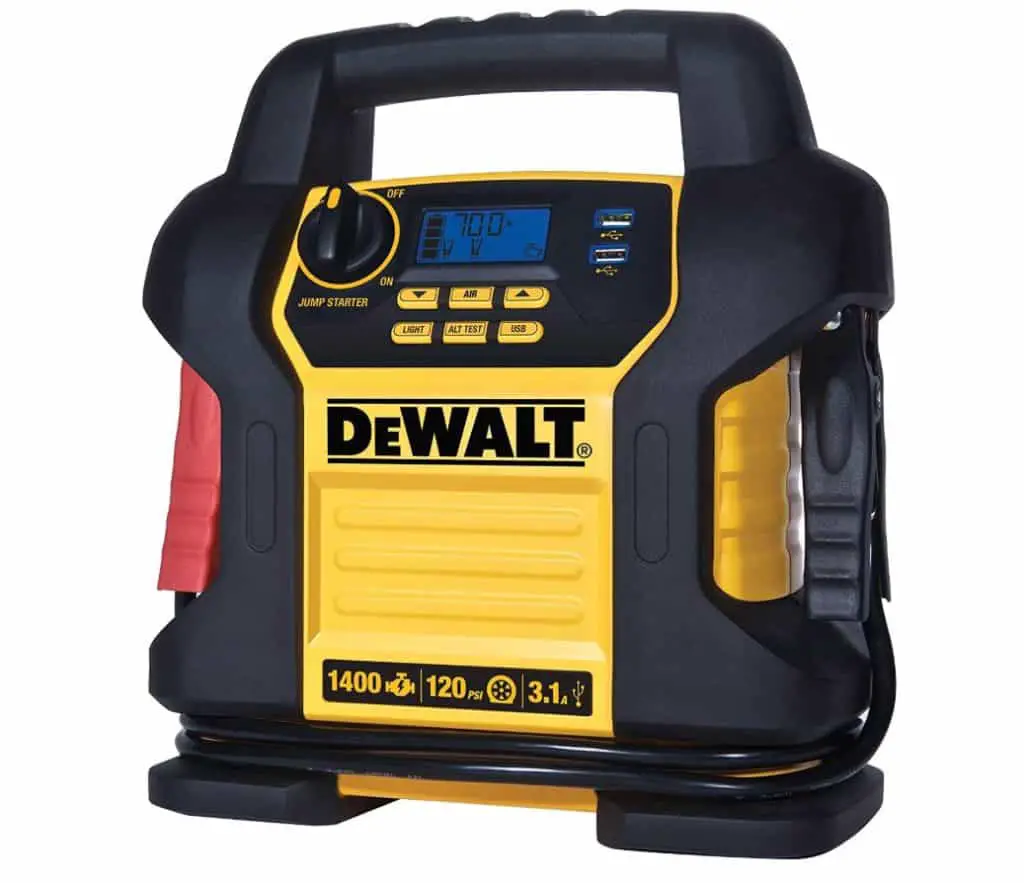
You would think that this essential would be overly obvious and a waste of time. But, I cannot tell you how many times I have been called on or seen someone needing help because they do not carry their own set of cables.
So again, stop whatever it is you are doing and go get a set of good jumper cables or a portable battery jumper. You won’t regret it.
8. Spare Tire or Tire Repair Kit
Most vehicles in today’s time either have run-flat tires or come with a spare tire, whether full size or donut tires. Jeeps fortunately come with full size spare tires and you should always keep that option.
In my opinion, never sacrifice your spare tire for some other upgrade. You won’t see avid trail riders rolling around without a spare, but I do see it all the time in the city. Especially if you run larger than stock tires, you don’t want to find yourself with a flat 37″ tire and wondering how you’re gonna make it home.
At the bare minimum, you should have a tire repair kit. In my experience, these can often times be more troublesome than switching a spare on. But if you just refuse to carry a spare or you’re running your spare already, you should carry a repair kit as back up.
In addition to carrying your spare tire, I believe it is worth it to by a full 5 tire set when you upgrade tire sizes and make sure your spare is the same size your other 4 tires.
Not only would it look ridiculous running a 31″ spare when your other 3 tires are 37″, but it could mess with your drive train and throw some things out of wack. Not to mention trying to get off the trails with that odd setup would prove to be quite the day. Not to say it couldn’t be done, but it wouldn’t fun. And thats what Jeeping is all about right?
9. Tools
Tools can be a wide array of anything you deem necessary to be able to fix your Jeep in an emergency. All the the things on this list could be considered tools. However, what I am recommending is a travel tool kit.
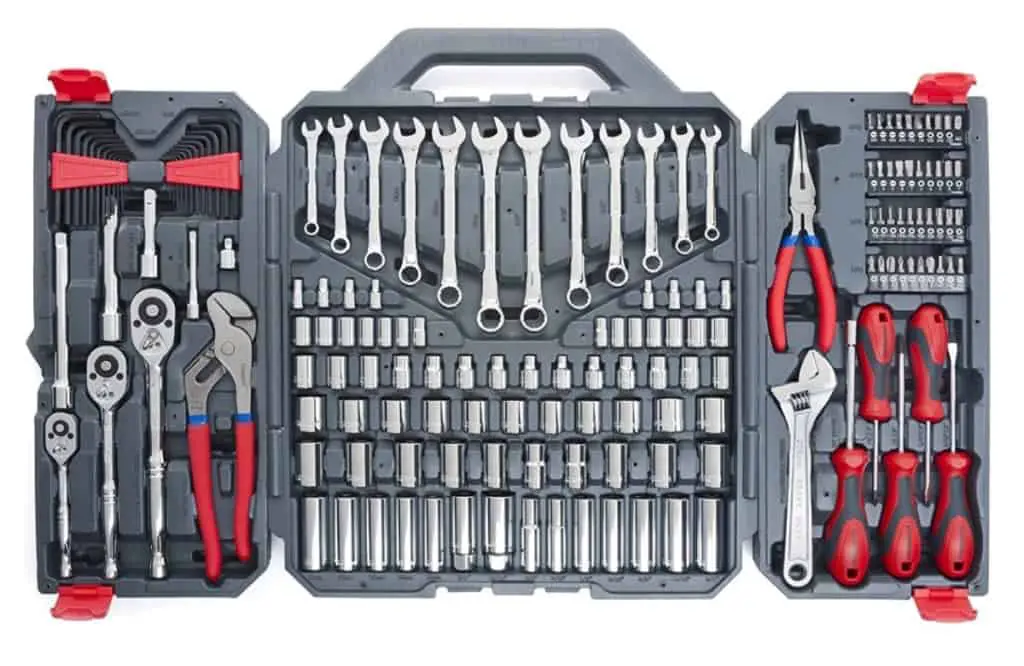
In these tool kits, you can keep a set of wrenches, screw drivers, bits, and whatever else you like. Chances are, if it’s something you’ll be able to fix yourself, you could do it with simple set of tools. Sure, it might not be fun and take longer, but you’ll still get it done.
As you find yourself more experienced with fixing your own rig and finding out what is necessary to do the work, you can switch pieces out and find the right set of tools for yourself. Heck, you might just find your self carrying a full out tool box with everything. Several rigs even carry the stuff to weld and run pneumatic tools.
As someone who loves tools, I find it worth it to invest in something with great quality and reliability especially when putting together your own tool kit to keep in your Jeep. Reason being, it does no good to have cheap tools on the trail that break and leave you way out of range of a local store to go get another one. Do things right the first time and you won’t regret it.
10. Fire Extinguisher
Lastly, to top off my top 10 list of essentials is something that wouldn’t normally occur to you to keep in your vehicle, and that is a fire extinguisher. Something that might not be all that necessary in town where a fire department isn’t ever that far off, a fire extinguisher can make all the difference on the trails.
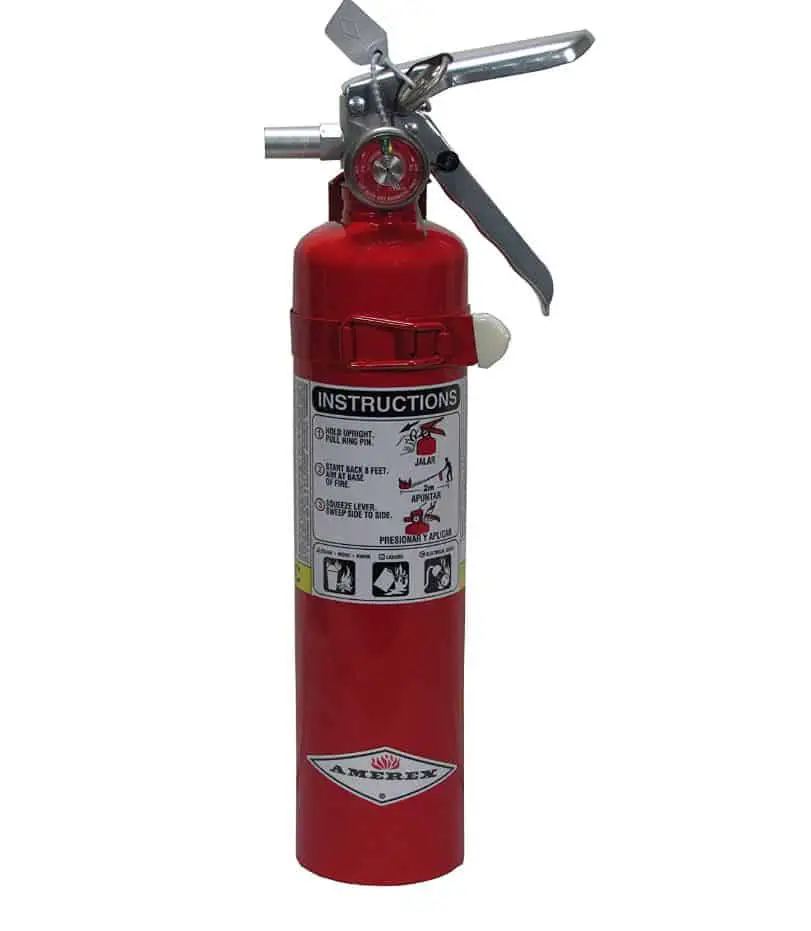
If for some reason a fire starts while on the trails, whether a vehicle fire or campfire or whatever the case might be, you are the first line of defense against something that could prove to be completely disastrous.
Carrying a fire extinguisher is a simple yet very effective way of ensuring that you, your friends/family, and the surrounding environment don’t get scorched. Sometimes the smallest precaution can prevent the most severe damage. Like my Dad always told me, an ounce of precaution is worth a pound of cure.
Keep in mind that there are several different types of fire extinguishers out there meant for different purposes. Make sure you have the right kind (most likely an ABC dry chemical) of extinguisher and take the time to familiarize yourself with how to properly it.

